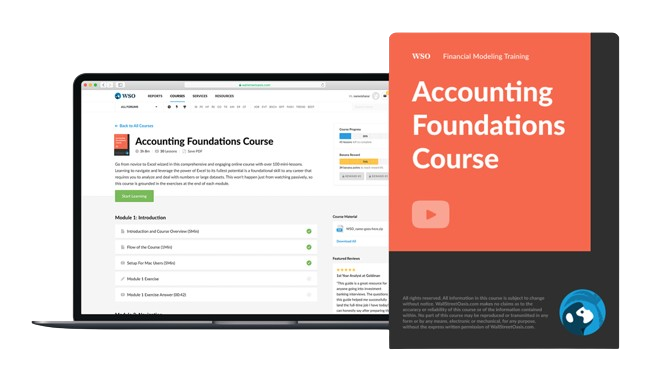Net Operating Loss (NOL)
This occurs when a company generates more expenses than revenues/incomes within a given tax period.
Net operating loss (NOL) occurs when a company generates more expenses (tax deductions) than revenues/incomes within a given tax period. When incurred, a business doesn't make any taxable income, meaning they don't pay taxes.

These losses aren’t only for businesses; businesses are the most common example of an entity claiming NOL deductions. Most taxpayers can claim an NOL deduction, including:
- Individuals
- C-corporations
- Both non-life and life insurance companies (life insurance companies can claim an NOL deduction in any year starting 2017)
- Estates and trusts
The IRS allows businesses to use NOL to offset profit in future years. This is called a loss carryforward. This makes it, so companies are taxed on average profitability, making the U.S. tax code more neutral. NOLs can be carried forward indefinitely, but the limit is 80 percent of taxable income.
The IRS does this to allow a form of tax relief when a company experiences a loss in a tax period.
Some companies don’t make profits in line with a standard tax year; some are cyclical. These are the businesses that commonly have NOLs.
An example would be a steel manufacturer. These companies' profits are largely dependent on the status of the economy. In one period, the company may experience significant gains, and then it may incur an NOL in the next.
Three things usually happen when businesses incur an NOL:
- Companies don’t pay taxes on income during the period
- Companies are eligible to receive a refund for previously paid taxes
- The company can carry forward the losses, lowering future taxable income
If NOLs are carried forward, they are documented under a new line on the balance sheet called deferred tax assets.

The formula for calculating deferred tax assets is below:
Deferred Tax Assets (DTAs) = Net Operating Loss (NOL) * Tax Rate %
If the DTA line item increases, then that means that the accumulated NOLs balance has increased due to the company experiencing further net operating loss.
If the DTA line item decreases, the firm uses NOLs to reduce its taxes, leading to increased free cash flow.
Is Net Operating Loss Bad?
Although the name implies an operating loss has occurred, the NOL deduction isn’t necessarily bad. Remember, with an NOL; you can carry your losses to future years to reduce tax deductions.
When your business is starting out and not generating much revenue, this can be extremely useful to stay afloat.

It's not uncommon for businesses to take a couple of years to turn a profit. Even when these firms start making a profit, it probably won’t be substantial.
By utilizing NOLs from previous years, you can retain more of the incoming profit. So, this can be an excellent thing for business owners instead of being something to fear.
Some other good things about NOLs are:
- First, they’re tax credits, which will reduce your tax liability.
- If your business is still operating, you can claim the losses in future years. If you decide to sell your business, you can carry the NOLs forward for up to 20 years after the sale.
Understanding Net Operating Losses
When a company’s net income is negative, this is called a net operating loss or a net loss. You can find out if this applies to any company by looking at the company’s income statement. Look at the bottom line or the net income line, and if it is negative (has brackets around it), it applies!

Before 2018, the IRS allowed companies to carry NOLs forward 20 years to net against future profits and backward two years, leading to an immediate refund of taxes the business previously paid.
Since a dollar now is generally viewed as more valuable than a dollar in the future, the carryback method was commonly used first.
After losses are carried forward for 20 years, they expire and can’t be used to reduce taxable income. In 2017, the Tax Cuts and Jobs Act (TCJA) was enacted. This legislation made changes to NOLs and how tax deductions worked.
With the implementation of the TCJA, the two-year carryback provision was removed. An exception to this rule is farming losses which can be carried back two years and forward indefinitely.
However, the carryforward period was changed from twenty years to indefinitely.
Another difference was that, now, carryforwards are limited to 80% of each subsequent year’s net income. In addition, if a company incurs NOLs in more than one year, they are drawn from the order in which they were incurred.
NOL Carryforward Example
Imagine that a business has a down year and then a profitable year. The firm has an NOL of $10 million one year and a taxable income of $11 million the next tax period. Since, starting in 2017, the carryforward rate limit is 80%, the firm is allowed to carry forward $8.8 million.

The loss from the previous tax period is carried forward and acknowledged on the balance sheet (of the second tax period) as a deferred tax liability. However, the loss (only 80% of the second year's income) can be expensed on the second year’s income statement.
The net income of the second year will be reduced by $8.8 million, resulting in a net income of $2.2 million. Since net income is reduced, so will taxable income.
A $1.2 million deferred tax asset will remain on the balance sheet and will be able to be carried into the following year. This is because only 80% of the second year's income can be deducted ($10 million - $8.8 million = $1.2 million).
It’s important to note that NOL carryforward provisions can vary from state to state. Most states try to conform to the federal standard, but some states limit the number of years NOLs can be carried forward and have different deductibility limits.
Restrictions
According to the IRS, to incur a net operating loss, it must result from certain deductions. These deductions may include expenses related to trade or business, casualty, theft losses, your word as an employee, rental property, or moving expenses.

The IRS doesn’t allow partnerships or S Corporations to claim NOLs; NOLs only apply to pass-through businesses, including sole proprietors. However, individual partners and owners can still find their share of the loss on the personal tax return form.
NOLs are subject to specific limitations. These excluded items include:
- Deductions for personal exemptions
- The net operating loss deduction
- Deduction for domestic production activities
- Any net capital losses
- Nonbusiness beliefs above nonbusiness income
- Section 1202 exclusion – the gain of sale or exchange of qualified small business stock
Since an NOL is a valuable asset that can reduce the firm’s taxable income in the future, the IRS restricts using an acquired company solely for the company’s NOL deduction.
According to Section 382 of the Internal Revenue Code, if there is a 50% change in ownership or more, the acquiring company is only allowed to use part of the NOL in each concurrent year.
If the acquired company has a small NOL, then the company's shareholders may get a lower sum of money than if the acquired company had a larger NOL.
FAQs
In 2020, when the Covid-19 pandemic hit the United States, the Cares Act was passed. The Cares Act temporarily changed the NOL rules for the tax years from 2018 to 2020. However, NOLs from 2018-2020 were allowed to be carried back up to five years.
This resulted in tax refunds from previous years. In addition, for the same period (2018-2020), NOLs could be used 100% to reduce a taxpayer’s income to zero.
NOLs can offset a company’s tax payments in future tax periods through an IRS provision called a loss carryforward. This is a tax benefit for firms that aren’t currently making a profit.
Many companies take some time to turn a profit when they start. This provision helps these firms, providing them leeway with their tax payments. When these firms begin turning a profit, they can pay their reduced tax liability by utilizing NOLs.
Net operating losses are recorded as assets on a company’s balance sheet. They’re recognized as “deferred tax assets” (DTAs). DTAs are created to offset a firm’s net income in future years, also known as an NOL carryforward.
The DTA account of the balance sheet will go down each year as a company utilizes the benefits for tax relief purposes. However, the usage of the DTA account can’t exceed 80% of net income in subsequent years.










or Want to Sign up with your social account?